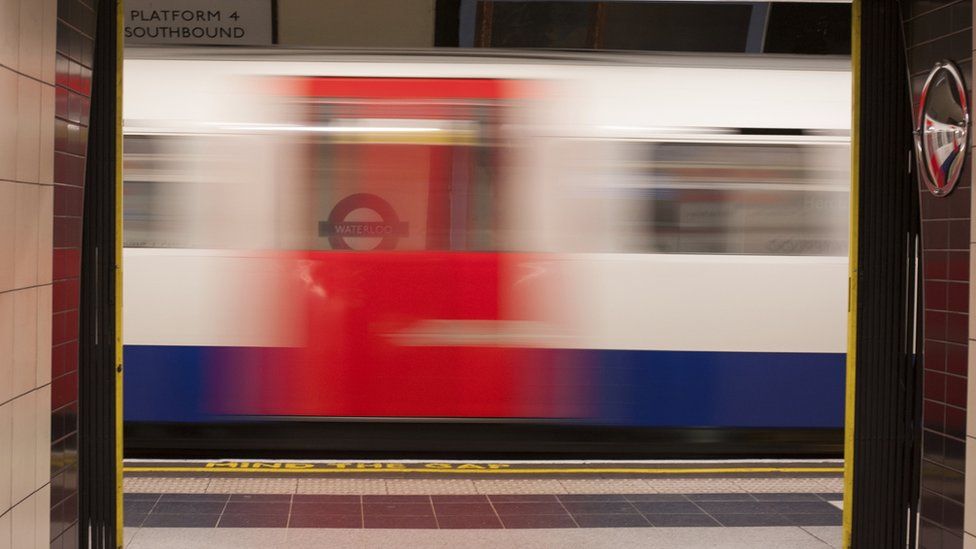Study suggests London Underground may be 'too fast'
- Published

A mathematical study of transport in London and New York suggests the UK capital should be wary of its trains travelling too quickly.
If Tube journeys are too fast, relative to going by road, then the model predicts an increase in the overall level of congestion.
This is because key locations outside the city centre, where people switch transport modes, become bottlenecks.
By contrast, New York's layout is such that faster trains will always help.
Reporting their findings in the journal Royal Society Interface, the researchers calculate that London's system would function best with underground trains travelling about 1.2 times faster than the average speed on the roads. This makes the optimum Tube speed approximately 13mph (21km/h); the current average is 21mph (33km/h).
Dr Marc Barthelemy, the paper's senior author, said it was a theoretical study and more data would be required to make specific recommendations.
"Giving exact numbers is a tricky thing," he told the BBC. "But the fact is that these networks are coupled to each other. Optimising something on one network can bring bad things on another network."
Transport for London (TfL) chose not to comment on the research.
'Multimodal' movement
Dr Barthelemy, a statistical physicist at the CEA research centre in Saclay, France, is fascinated by the interplay between coupled networks. And transport networks, such as the roads and train lines in his study, are becoming increasingly interconnected.
In a report on urban mobility published on Tuesday, the LSE Cities group at the London School of Economics describes a trend towards "multimodal" journeys, where travellers switch - for example - from train to bus or car.
This is partly driven by smartphones and apps which search for the fastest route, even if it involves a change or two. But in big, expansive cities like London, multimodal trips are inevitable, Dr Barthelemy said.
"In London there's a clear increase in the number of modes with distance," he explained. "It's a very clear effect."
To test how these different transport networks can affect each other, he and his colleagues built computer models based on the exact structure of the road and underground train networks of both London and New York.
Then, they connected these two layers based on the proximity between streets and subway stations. "We create these connections, and then we make an assumption, which is: When someone wants to go from A to B, they look for the quickest path - whatever the mode."
Using this relatively simple system, the researchers measured various aspects of the "connectedness" of different points in the two networks.
This painted a distinctive picture of how they function together; the underground network, for example, tends to decrease congestion centrally but increase it where the underground lines finish.
And there were key differences between London and New York. "Surprisingly enough, the network in New York is much more centralised than the one in London," Dr Barthelemy said.
This means that, according to the model, levels of congestion in downtown Manhattan are so high that the city would benefit from faster trains "even if that increases the congestion at some peripheral points - the entry points to the subway".
In London however, those bottlenecks tip the balance in favour of a compromise on train speed - with possible planning implications.
'Worth considering'
"Maybe making Crossrail as fast as possible isn't the best solution in terms of global congestion," Dr Barthelemy commented.
This study is based entirely, however, on a model which includes no passenger data from the transport system itself - as Prof Michael Batty, a planning expert at University College London, pointed out:
"It really is just a network model. There are no capacities on the network - it's not really a flow model, like the ones that Transport for London actually use."
Nonetheless, Prof Batty said the findings were perfectly plausible. "If you join networks together, then you get unanticipated effects," he said.
"I think the point they're making is well worth considering."
The problem of interacting networks probably applies equally to the capital's distinct, overlapping train networks, he said.
Follow Jonathan on Twitter
- Published28 January 2014
- Published21 November 2013